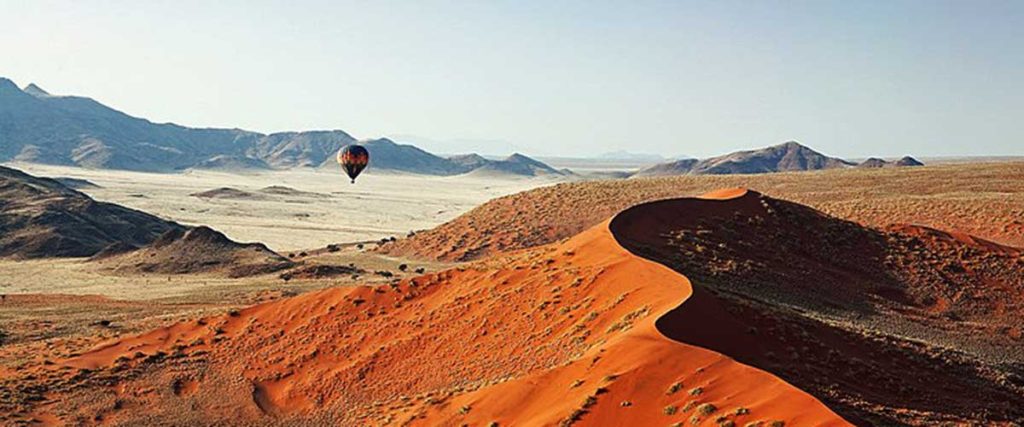Namibia Travel Guide

Namibia travel guide offers insights into this premier safari destination.
Explore ancient deserts, remote and vast regions, mountain high sand dunes.
Discover trees some 280-million years.
T
H
E
N
O
R
T
H
Damaraland is located to the north of Swakopmund and to the south of Etosha park. The landscapes, with their spectacular desert montains, gorges and plains, are stunning.
Desert adapated elephant, rhino zebra, giraffe, lion and various species of antelope thrive in this region.
Etosha National Park: Regarded as one of the best parks in Africa . Etosha covers 22 270 sq km with no fewer than 114 species of mammal and 340 species of bird. For the most part it consists of open, flat country where large concentrations of wild animals are relatively easy to see.
Epupa Falls : located 135 kms downstream from the Ruacana Falls are a series of cascades that drop a total of 60m over a distance of about 1.5 kms.
Kaokoland : home to the Himba

C
O
A
S
T
A
L
R
E
G
I
O
N
S
Swakopmund – Namibia’s seaside resort resembles a small Bavarian village nestling between the desert and the sea.
The Swakopmund Museum captures the colourful past and also highlights the desert flora and fauna, as well as the marine life, of the area.
Fishing is the dominant industry in Walvis Bay which is also known for its water sports and major harbour.
Famous for its shipwrecks, the Skeleton Coast is divided into 2 zones.
the Southern Section, between Ugab and Hoanib rivers, consists of gravel plains, but north of Terrace Bay high dunes occur in the immediate vicinity of the coast. This section is accessible to the general public and attracts anglers to its superb fishing grounds.
In the northern section between the Hoanib and Kunene rivers. The latter has been demarcated as wilderness area and tourists can only enter the area by means of exclusive fly-in safaris conducted by a concessionaire
There are two important places of interest at Cape Cross, the Cape Fur Seal colony with numbers totalling more than 100 000. Well worth seeing is the Diego Cao, an historical landmark.
Once a thriving diamond centre, Kolmanskop is now a ghost town. Where once majectis mansions stood, today they are filled with the shiftings sands of the Namib.
The small fishing town of Luderitz lies between the Namib desert dunes and the wild Atlantic seaboard. It has a fine collection of builidng dating from the German era.


Southern Namibia – in a nutshell ………..
Fish River Canyon : world’s 2nd largest canyon and one of the natural wonders of Africa. The Fish River has carved a 550 metres deep 161 km long, 27 km wide ravine. The awesome grandeur of the canyon is magnificent.
Particularly attractive early in the morning and at sunset
Challenge some of the world’s highest sand dunes at Sossusvlei.
A transfrontier park, Ai Ais is also famous for its mineral springs.
ZAMBEZI REGION (previously Caprivi region)
is a small strip of land bordering Zimbabwe and Zambia – characterised by numerous small game parks. The area is well known for its excellent fishing and birding spots
The capital of this region is Katima Mulilo and is an important safari hub.
Mahango Game Park situated on the Kavango river close to Popa Falls. Although a small park it is home to elephants and buffalo.
Mudumu Park is an excellent reserve for birding enthusiasts and sighting predators
CENTRAL NAMIBIA
Windhoek is Namibia’s capital city with a number of interesting places to visit suuch as the Tintenpalast, Alte Feste and the Christuschurch.
Twyfelfontein known for its unique rock art paintints is UNESCO world heritage site’ –
Kalahari desert : small dunes
Spitzkoppe : stunning granite mountains – rock art
Waterberg Plateau : important game reserve with endangered species
